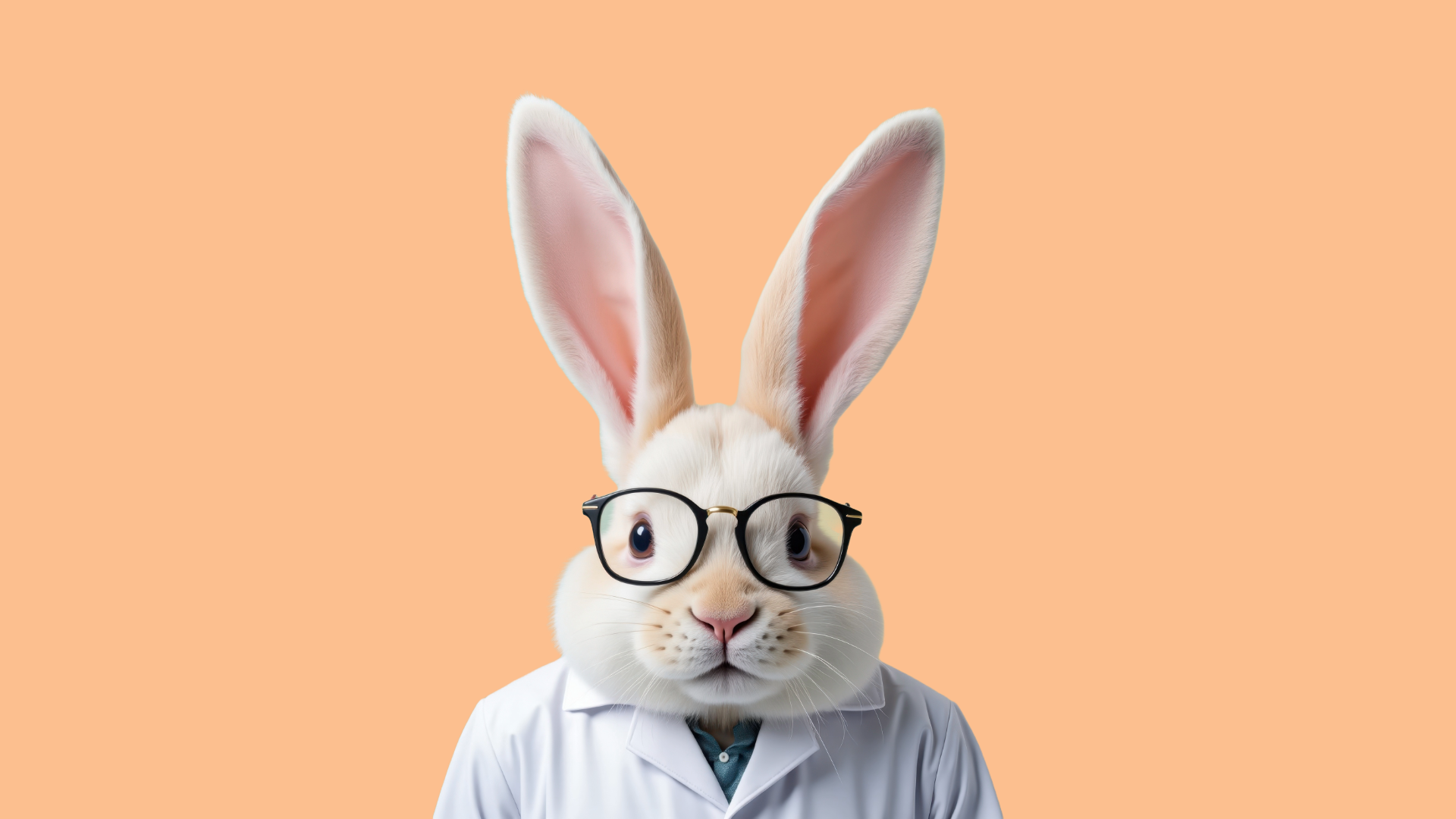
Forward editor Caitlin Mackesy Davies finds out why one of our best models for the future of food may well lie under the streets of London.
Forward: features are independent pieces written for Mewburn Ellis discussing and celebrating the best of innovation and exploration from the scientific and entrepreneurial worlds.
‘Every day has been a school day,’ Richard Ballard, co-founder of Growing Underground, tells me during a phone call in mid-July. ‘I’ve learned so much about science, physics and biology, as well as marketing and how to run a business. So many disciplines have been learned along the way.’
It has been a strange old journey, too. Ballard has gone from being a furniture importer in his early 20s, to a film student and filmmaker during what he describes as ‘a sort of mid-life crisis’, to where he is today – the co-founder of an award-winning organic, urban farm endorsed by celebrity chef Michel Roux Jr, who is a board member.
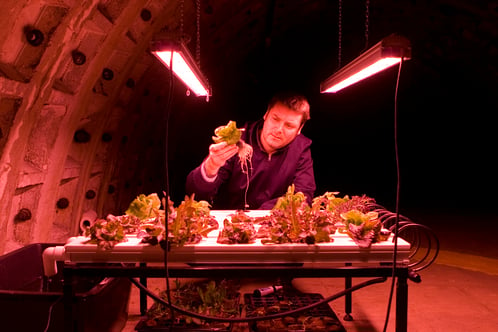
[1] Richard Ballard inspecting a growing bed
As the farm is only a few miles away from me (and as an enthusiastic COVID-era back-garden farmer), I would have loved to travel over to Clapham in South London, where the farm is located inside previously disused World War II tunnels, to explore the site in person. Photos of the subterranean growing beds sitting 33m under the streets of South London reveal a soothing landscape bathed in pink light, and the company even launched public tours earlier in the year. Sadly, COVID-19 made a visit impossible for me.
Nevertheless, Ballard and I settled down to a traditional landline call, to talk about the technology behind the project and what brought about his unusual career move.
Early learning
Straight away, Ballard is open about how ‘green’ he and co-founder Steven Dring were at the outset, when it came to the feasibility of the project. ‘When we first started this, we weren’t sure if someone would come along and say, “You can’t do this” or “This isn’t going to work”.’ But inspired by the work of two particular people – one an academic and one an activist – he set out on a course to discover a new way of building a local food supply with a sustainable footprint.
‘I've always been entrepreneurial; I’ve always worked for myself. But in 2008, with the financial crash, my furniture-importing business was forced into liquidation. So I moved to London to do a film degree, something I had always wanted to do.
‘Like a lot of people, I was fascinated by the history of London and there was a lot of work going on underground at the time, with Crossrail for instance. I started looking at the history of that and for my final thesis I produced a film on the future of cities, with a focus on growing populations and the future of food.
‘That led me to two interesting characters. The first was Jeremy Rifkin, a writer and activist. He has an idea about the Third Industrial Revolution, which is all about using renewables on a commercial scale as well as community projects that can feed into a grid system – and using energy very intelligently. That really captivated me.
‘I also looked at the idea of vertical farming and that led me to Dickson Despommier, the “godfather” of vertical farming who came up with the concept in a class at Columbia University in the early noughties. They were looking at the fact that agriculture is responsible for a third of all carbon emissions and how to reduce that. They looked at bringing food production closer to the point of consumption and at using waste streams from industry. The ideal [format they came up with] was a vertical block, and that’s how the vertical farm was born.
‘That began to inspire controlled-environment agriculture as an industry and a generation of vertical and urban farmers, including myself and my business partner Steven [Dring].’
Ballard’s film research had revealed the existence of abandoned tunnels, previously used to shelter Londoners from the Blitz. By 2012, he and Dring had begun development on Growing Underground, raising money through crowdfunding, and started to build. The company began supplying produce to food service companies in 2016, and by 2017 had begun supplying retailers, with local users now including New Covent Garden Market and a number of big high-street grocery names.
“The underground location has proved crucial to the operation, providing a stable, consistent environment in which to work”
The underground location has proved crucial to the operation, providing a stable, consistent environment in which to work. Having done R&D and trials in the first site he identified, Ballard eventually moved the farm to the tunnel next door, which offered a larger footprint for the final build.
Development involved a steep learning curve. ‘There was a lot of R&D in the early days, trying out different crops and playing with the environment,’ Ballard explains.
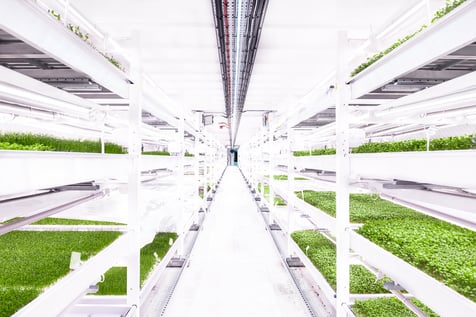
[2] Growing Underground has bespoke racking
The team also worked with an engineering firm that designed bespoke racking and a system that would fit into the space and enable workers to move around within it. As Ballard explains, this accommodates the various horticultural processes that need to happen – involving propagators and chambers, for instance, as well as the need to move produce into the picking, packing and processing areas. ‘You have to think about all this layout before you begin,’ he adds.
LED there be light
Ballard notes that the early days of the project were spent trialling lots of different LED lights. ‘There has been quite a bit of development over the past five to six years, but some of the early issues were the amount of heat that they gave off,’ he says.
It’s no surprise that getting the lighting scheme just right is non-negotiable for the business – and that is a science all to itself. Ballard offers a short course: ‘There are many different ways of using light to affect crops. For example, this impact can be physical – for instance produce can be more elongated or denser, or you can force plants to flower by using the red end of the spectrum if that is what you want to achieve.
‘The LED lights also affect the triggers for the development of sugars and starches within the plants, so you can use [variation in the light scheme to] create different flavours and nutritional content. We’re looking at trials now in terms of using the UV and far-red end of the spectrum – as well as the blues, the yellows and greens.
‘We are also looking at the potential to recreate a sunrise in the morning and sunset at night, and that will evolve as well. With our environment we can extend the length of the day, we don’t have to work within the 24-hour cycle.’
The farm uses a hydroponic watering system, feeding water to plants held in a medium made up of recycled carpets. Hydroponics can grow most things, says Ballard, and it works really well with leafy greens, soft fruits, cucumbers and peppers. At present, the company is focused on microgreens and salad leaves, but theoretically there is room to add new products.
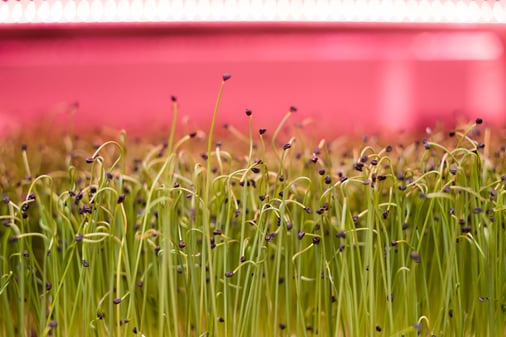
[3] Garlic chives growing under LED lighting
Hydroponics are said to use 70% less water than traditional outdoor farming, so it’s just one of the ways that the business is working towards its goal of operating with ‘zero effect on the planet, with zero carbon production’. By the first quarter of next year, Ballard hopes it will have achieved certification as a carbon-neutral enterprise, and the business is currently going through the B-Corporation application process as well.
Importantly, says Ballard, ‘The controlled temperature gives us consistency every day. We know if it will take 10 days or seven days to grow a particular crop, and we know that for each crop we grow. This means we can be very accurate with customers. We can say, “We can have that crop ready for you in x days or y days”, depending on what the crop is. We can be very accurate about what they require, and we can really cut down on waste because we can grow to order.’
Unique recipes
Part of creating that certainty is a complex system of monitoring that is embedded within the facility and the process. Wireless sensors and webcams have been placed throughout the farm and tunnels to measure and manage a whole host of factors including temperature, humidity and air flows, CO2 levels, the amount of oxygen in the water and its turbidity.
Samples of water and products are also sent away every week for testing. That feeds into a proprietary operating system that the business has developed, taking in everything from the sowing plan to the harvest record.
‘With all that information and the fact that we have now been in operation for five years, we now have the “recipes” for all the crops that we grow,’ Ballard explains. That includes ‘the number of days of light they require, the amount of yield we get at a certain temperature based on the environment in which they are growing, and the EC, PH of the water [its acidity and level of conductivity, which can indicate whether plants are getting sufficient nutrients]’. And all that information links back to the company’s microbiological testing.
“We now have the ‘recipes’ for all the crops that we grow: the number of days of light they require and the amount of yield we get at a certain temperature based on the environment in which they are growing”
That knowledge is now being built into plans to expand into currently unused sections of the tunnel, Ballard says, and into other sites. It also means that for any future development, there is the opportunity to put sensors into a proposed site for a few months and then use the environmental data they already have – on the transpiration rates of plants, for example – along with information on the building materials (such as the thickness of the tunnel) to calculate the number of LEDs that would need to be installed, what would be needed to achieve a suitable level of humidity, and so on.
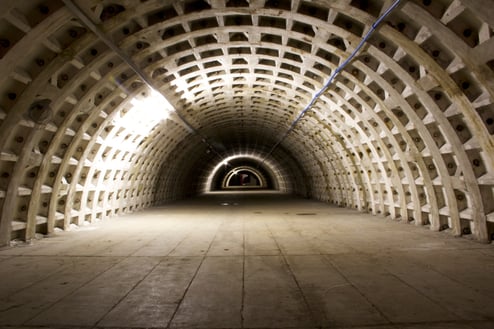
[4] There are plans to expand into unused sections of the tunnel
‘That all feeds into the capital expenditure you need to put in in order to achieve the environment that you want,’ Ballard says. ‘By being able to determine what environment you can get from a particular space, using historical data, you can determine what you can grow at the most efficient price.’
As part of developing this capability, the business has been working The University of Cambridge’s engineering department and the Alan Turing Institute, which are using the farm as a resource for research into energy optimisation in urban farming and ‘developing new mechanisms to leverage data science and simulation to support energy-efficient built environments’, respectively. It has also been working with Nottingham Trent University (NTU) on an innovative way of using an irrigation system. As part of its Sustainable Futures project, the NTU website notes: ‘We are investigating efficient ways to manage natural water resources by implementing cost-effective and safe technologies… and analysing methods to reduce unnecessary consumption of energy and materials.’ The university believes that ‘new urban farming systems can provide fresh, safe and nutritious food all year round’, bringing ‘a whole host of benefits, from increased sustainability to community wellbeing and local employment’.
The company is now looking also at developing an IP strategy around this historical dataset, which Ballard calls ‘one of our key strengths’. ‘We have historic data for our growing, not just six months or three or four trials, but consistent data produced during four years of supplying retailers 364 days of the year and growing consistently, including during the COVID period.’
Growing the business
The company has been able to continue supplying produce throughout the COVID-19 disruption and currently has about 30 employees, ranging from people who work on the operational side to people working on R&D and business development.
It is certainly a fertile area for growth. Many industries, says Ballard, are keen to find a provider of ‘a consistent supply, at a consistent price and in a consistent quantity’. ‘That could be cosmetics, pharma, botanicals or nutraceuticals, as well as the horticulture and foods that we are already doing.’
And while the business is currently expanding in its existing premises in Clapham, the model for the future doesn’t have to be underground, suggests Ballard. ‘It’s about finding urban space or redundant urban space that we can grow in and that fits the customers we’re supplying. One of our next plans is to build a new site closer to retail distribution centres, and that could be above-ground.’
LED light: The colour connectionBlue: Correlates to chlorophyll production. Promotes strong stems and leaves. Red: Encourages plants to flower and produce fruit, and assists with germination, root growth and bulb development. Far-red: Can promote flowering and increased yield. UV light: Can influence colour, nutritional value, taste and aroma, and may also reduce environmental stress, fungus and pests. Pink: Combines red and blue spectrum to produce a ‘balanced diet’ for plants. |
Our food future
For the moment, however, efforts will remain concentrated on supplying hyper-local outlets, including New Covent Garden Market, which is just down the road. Ballard is acutely aware of the part his business plays in supporting necessary change in the food supply chain.
‘The research that is going on now is really going to feed the future. If climate change really does get so bad that with our current available arable and agricultural land we are struggling to provide enough food for an extra 2 billion people and the livestock that we raise to feed us, we will need to be very clever about how we organise the distribution of food and think carefully about how to minimise food waste in the future. We have to think about growing more crops in a smaller space and also about the potential to grow arable crops such as wheat on vertical farms.’
Ballard is inspired by the regenerative agriculture movement starting now in the US and Europe, the resurgence of organic farming principles, as well as the practice of establishing treelines and bushes alongside agricultural land in order to attract birds and insects.
He acknowledges the need for a variety of approaches: large-scale, commercial farming, but also what Growing Underground is doing at the other end of the spectrum. ‘Certainly there is a place for both, but I think in all areas technology is really helping us to look at our knowledge of how these agricultural processes affect our planet and our biodiversity and to work with the land in a much better way.’
Ballard signs off by declaring that ‘it has been a very interesting eight years’. He even predicts that ‘the next decade is going to be an interesting space to be in’. It’s a sentiment that I doubt anyone would disagree with, and I’m sure we’ll all be keeping a weather eye on the next steps for this fast-growing business.
Fertile ground for innovation
Simon Kremer, a partner in the life sciences team at Mewburn Ellis comments:
"Growing Underground perfectly illustrates how controlled-environment farming can provide an important contribution to greening our food supplies. Compared with traditional outdoor farming, the controlled environment provides increased quality control, reduced use of pesticides and year-round productivity. Add to this the ability to use non-agricultural land and site production close to consumers and the credentials are clear. It is fertile area for IP also – with innovations in everything from optimised LEDs, novel soil-free systems, and environmental monitoring apps. The future looks bright, even if it may be subterranean."
Read more from Mewburn Ellis on the future of farming here.
Written by Caitlin Mackesy Davies.
Images provided by Growing Underground [1] [4], Martin Cervenansky [2], Betsy Mccue [3]
Simon has more than 25 years’ experience working as a European and UK patent attorney working in the life sciences sector. He provides clear and practical advice on all aspects of patents and other IP rights including drafting, prosecution, inter partes proceedings and due diligence. He is regularly involved in oppositions and appeals at the European Patent Office and covers a wide variety of technical fields, including physical biochemistry, therapeutics, diagnostics, genetics, chemistry and mechanical subject matter.
Email: simon.kremer@mewburn.com
Sign up to our newsletter: Forward - news, insights and features
Our people
Our IP specialists work at all stage of the IP life cycle and provide strategic advice about patent, trade mark and registered designs, as well as any IP-related disputes and legal and commercial requirements.
Our peopleContact Us
We have an easily-accessible office in central London, as well as a number of regional offices throughout the UK and an office in Munich, Germany. We’d love to hear from you, so please get in touch.
Get in touch
